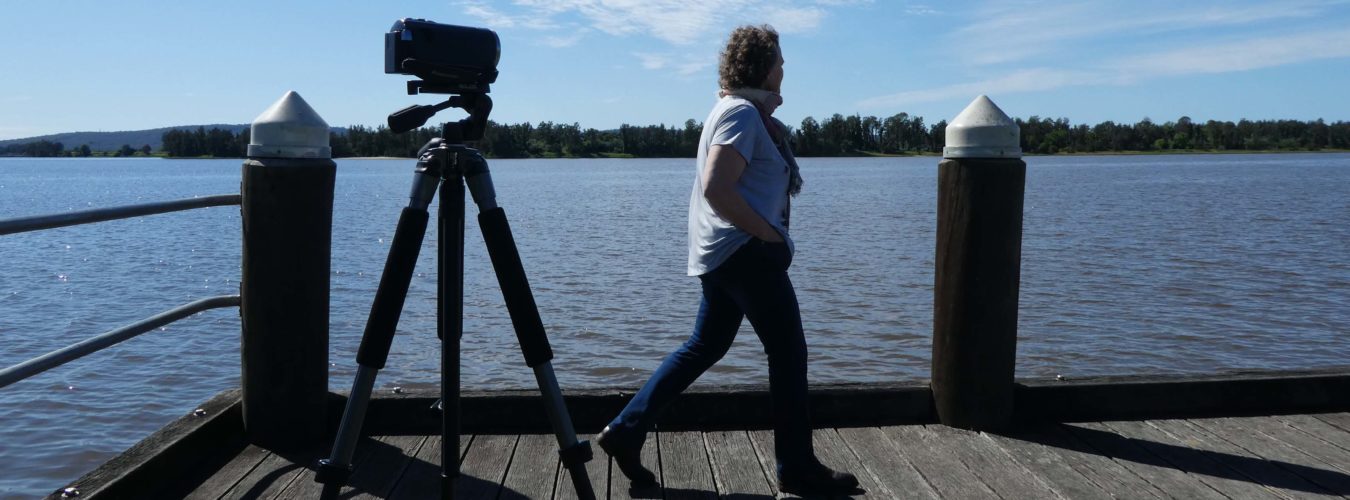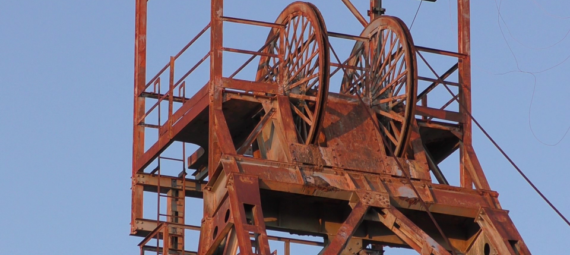August 2022: Wilyakali/Barkindjii Country
Remoteness is in the eye of the beholder, it turns out. I only realised this fully as we travelled the Silver City Highway northward between Wentworth and Broken Hill.
Broken Hill had always seemed about as far flung a destination as there is in NSW when viewed through the lens of my home on the east coast near Sydney. From there it’s an eye-watering 13 hours of driving (without stopping).
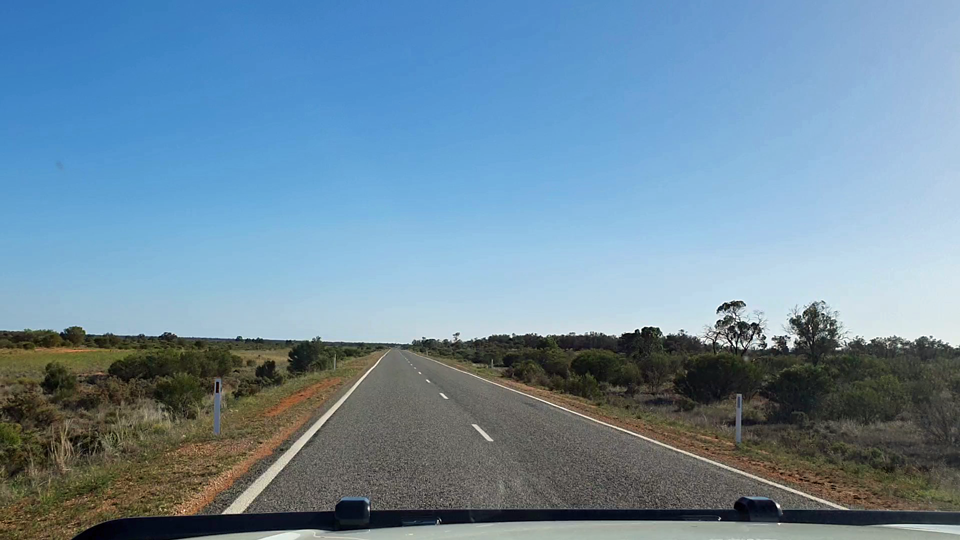
But, in fact, this amazing heritage listed desert city is just a short three-hour drive from Mildura over the border in Victoria where we had been staying. It’s got all of the things you’d expect of a significant regional centre, and a whole heap of things you can see almost nowhere else.
What did we love about it? So many things. The light on the surrounding desert landscape (it’s attracted many an artist to Broken Hill). The stark grandeur of the mining structures and mullock heaps that loom everywhere above and around the town. The story of trade unionism in this most industrialised of places.
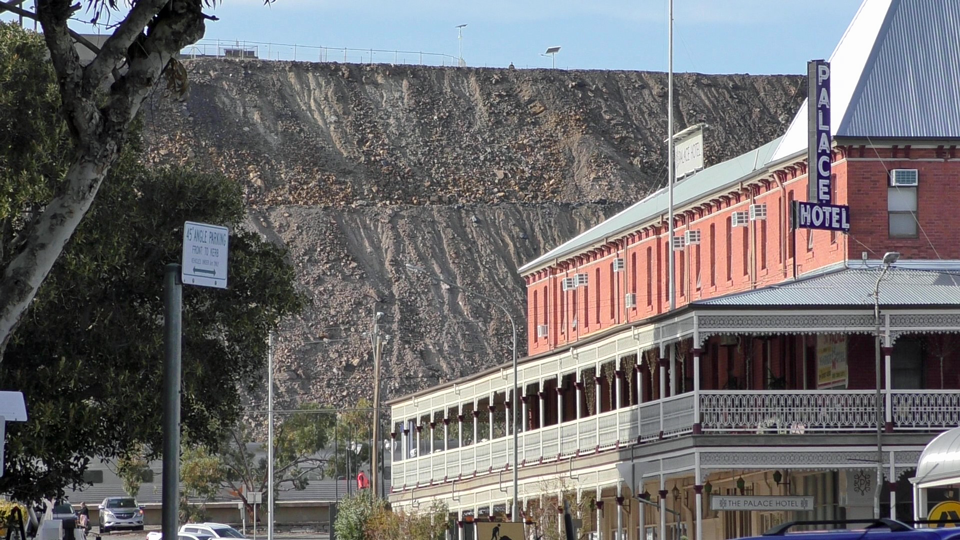
The history of it all, including the ancient stories of the Wilyakali and Barkindjii people for whom this place has been home for tens of thousands of years. The works of the late Pro Hart – Broken Hill’s most famous art export.
Would I go back? Yes, in a 13 hour flash!
What we did
We were in Broken Hill for four days, and we could easily have stayed a few more. Here’s the highlights.
Historic street scapes
There are so many buildings and places of historic significance in Broken Hill it’s easy to understand why the entire town was added to the National Heritage List in 2015. It sits there, deservedly, along side internationally famous and iconic Australian locations like Bondi Beach, Uluru-Kata Tjuta National Park, and the Great Barrier Reef.
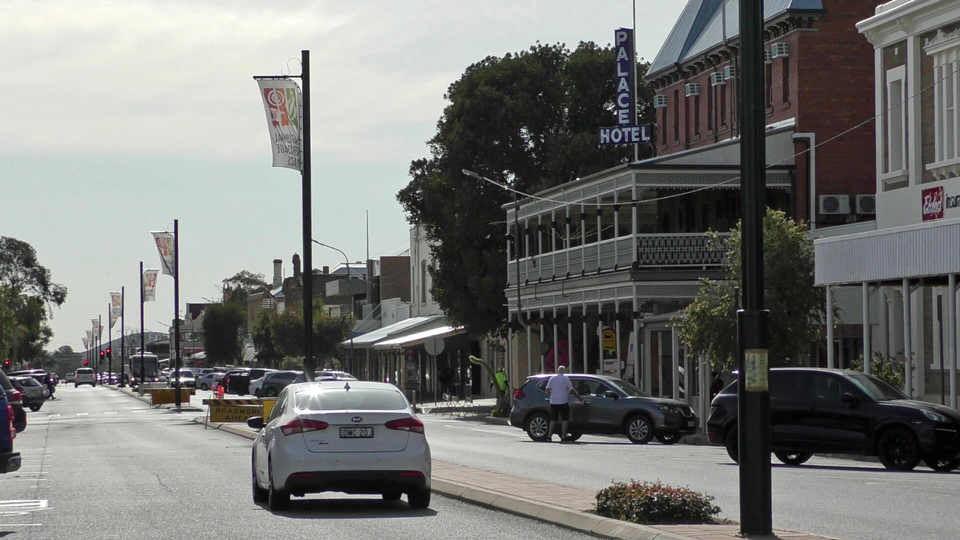
You can either pick up a map from the visitor centre and guide yourself around, or book in for a two-hour tour which leaves the visitor centre at 10am.
Most of Broken Hill’s notable buildings are in Argent Street, a wonderful clustering of historic gems – the post office (1891 – under renovation when we were there) the Town Hall (1890), the Police Station (1890) Court House (1889) and The Technical College (1900).
There are more fantastic old pubs than you can poke a stick at – including the three-storey Palace Hotel (1889) with its amazing long verandas and its cast-iron balustrades.
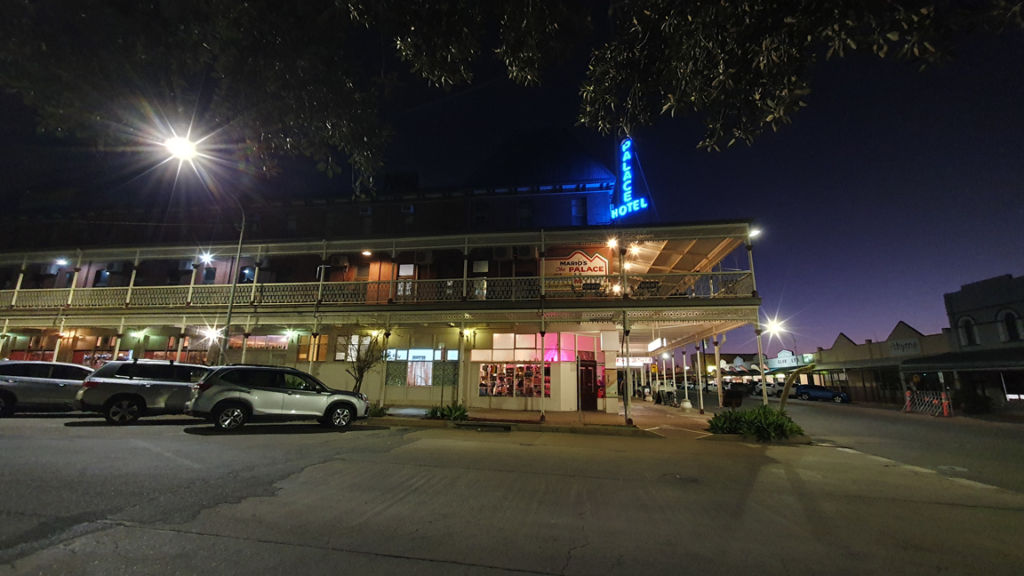
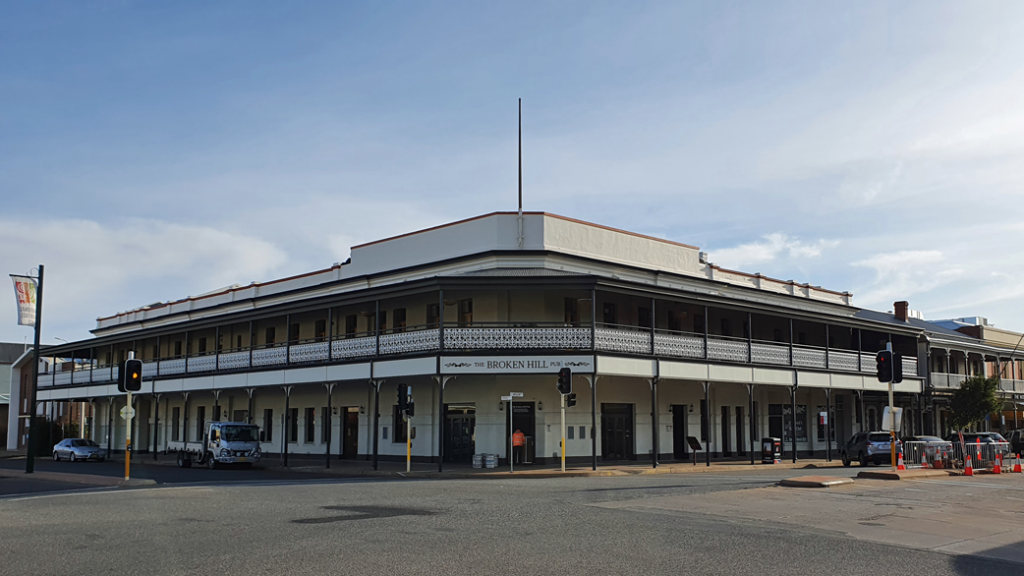
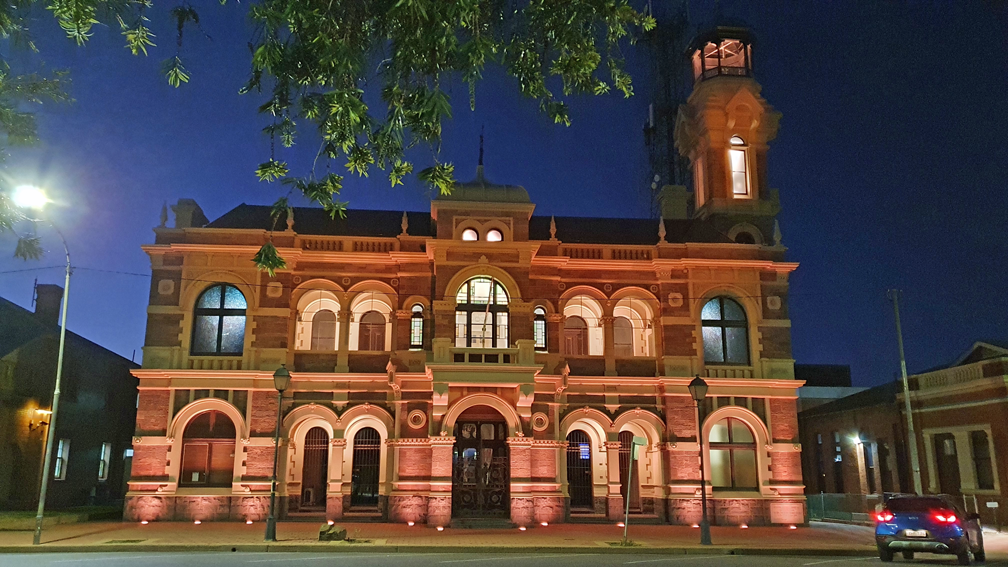
Trades Hall
The extraordinary Trades Hall building (1898-1905) was a firm favourite for the story it tells about importance of the union movement in Broken Hill. It was from the industrial confrontations at Broken Hill to achieve better wages and safer conditions that many modern labour standards come. In 1921, for example, Miners Federation members in Broken Hill won the world’s first 35-hour week and first industrial diseases compensation scheme, after an 18 month strike
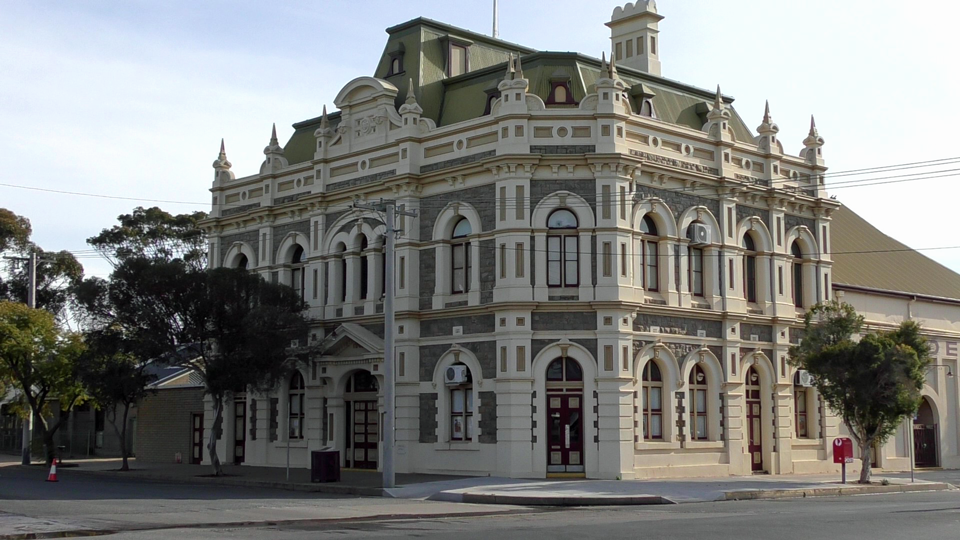
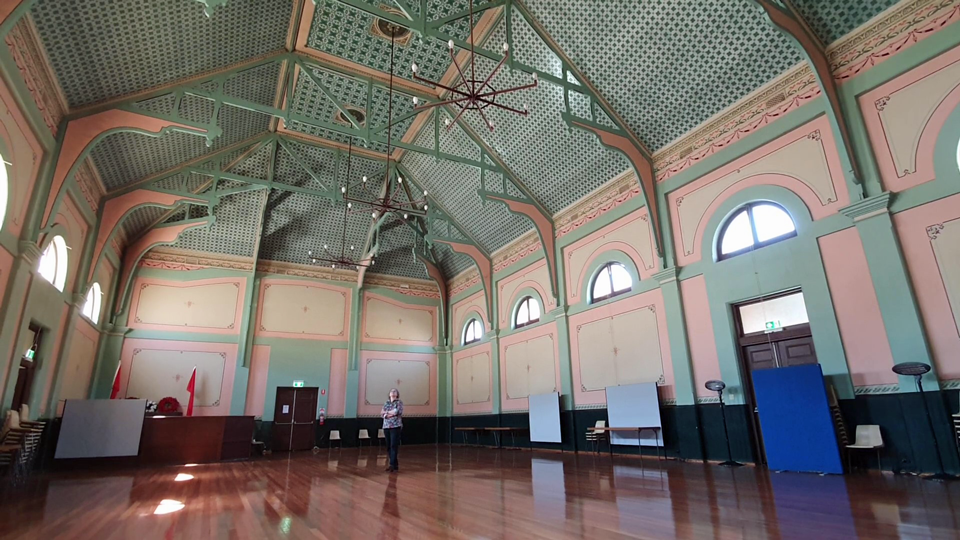
It’s an architecturally stunning Victorian era building, paid for entirely by the people of town, and dedicated to the rights of workers. Today it is still owned by the union members of Broken Hill and managed by the Broken Hill Trades Hall Trust.
Line of Lode Memorial
This extraordinary memorial sits high on the mullock heap that looms above Broken Hill, an ever-present reminder that this is a mining town, not just a tourist stop. The memorial is a stark reminder that getting out the silver that brought great wealth to some came at the cost of more than 800 lives lost since mining started in 1883.
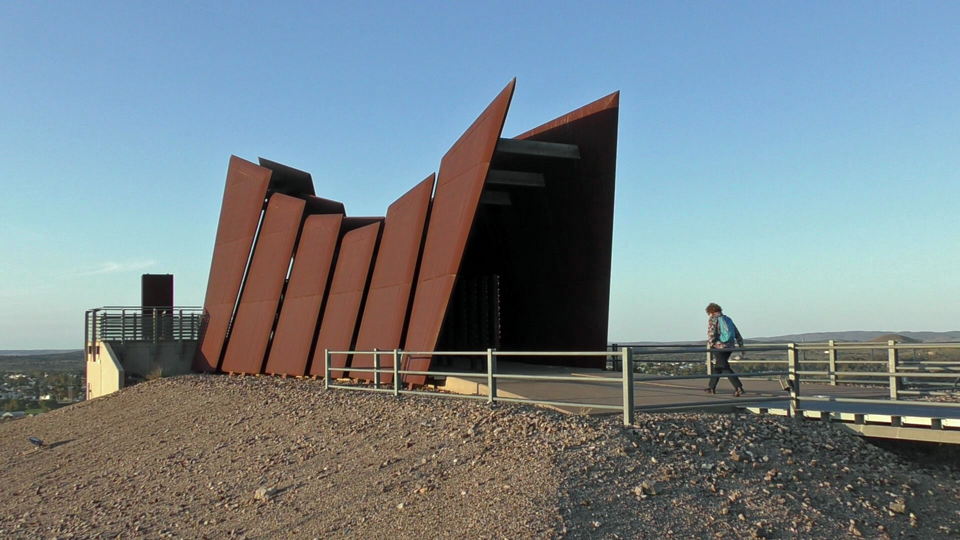
The memorial is a striking angular structure of rusted steel which is said to be a metaphor for the underground lives of the miners, evoking the damp, claustrophobic underground environment. As you walk through it, the names and cause of death of all those who died are listed. It’s sobering reading. Then you emerge from the “tunnel” to behold the most glorious views over the city and the surrounding desert.
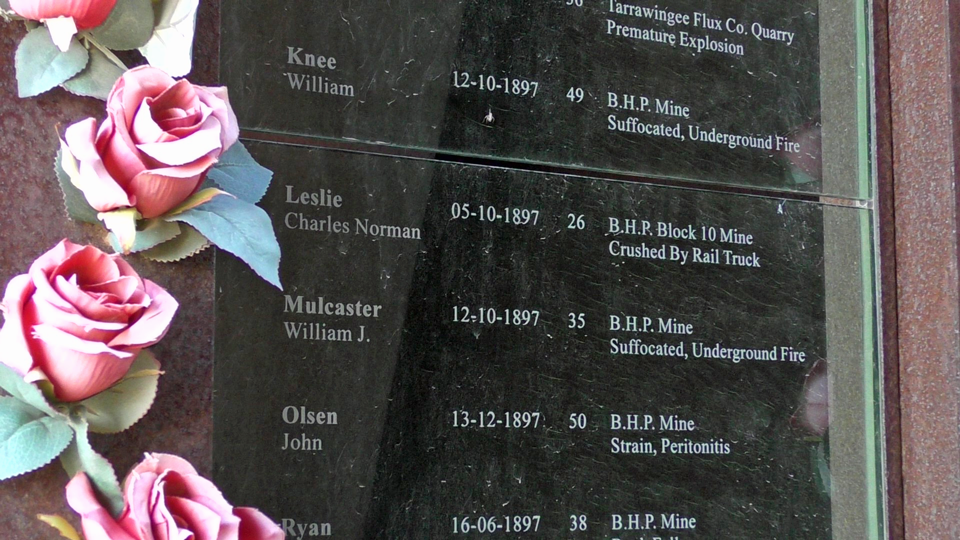
The memorial sits within the Line of Load Reserve, which is undergoing a multimillion dollar upgrade at the moment. The amazing Broken Earth Cafe will be expanded and upgraded and a more reliable water supply scheme will be added to allow further development of the attractions in the reserve.
Junction Mine
I have to confess to a strange fascination with the surviving relics of Broken Hill’s mining history. Not only do you see these now defunct structres everywhere, they have an industrial grandeur about them. It’s well worth swinging by this iconic landmark on the Menindee Road.
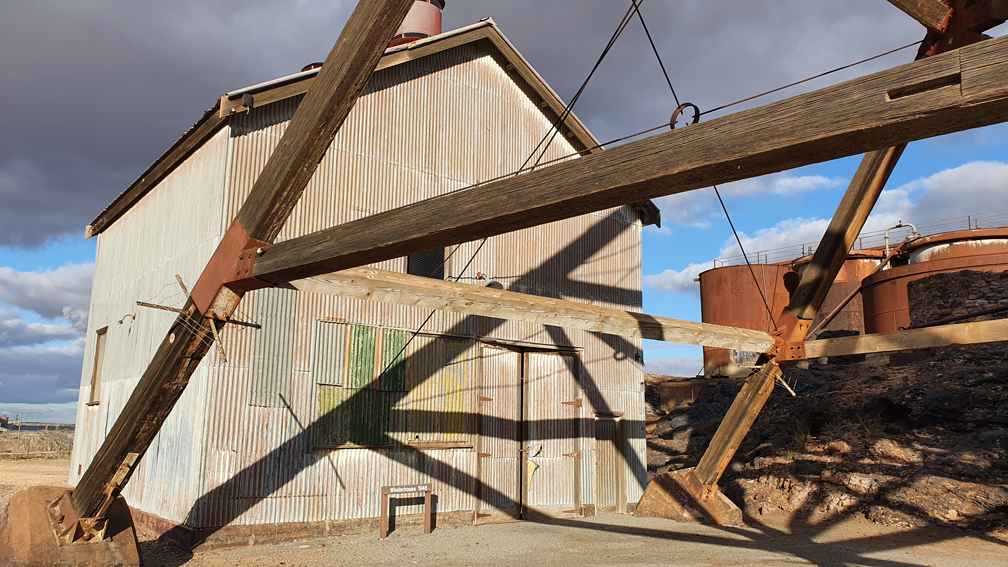
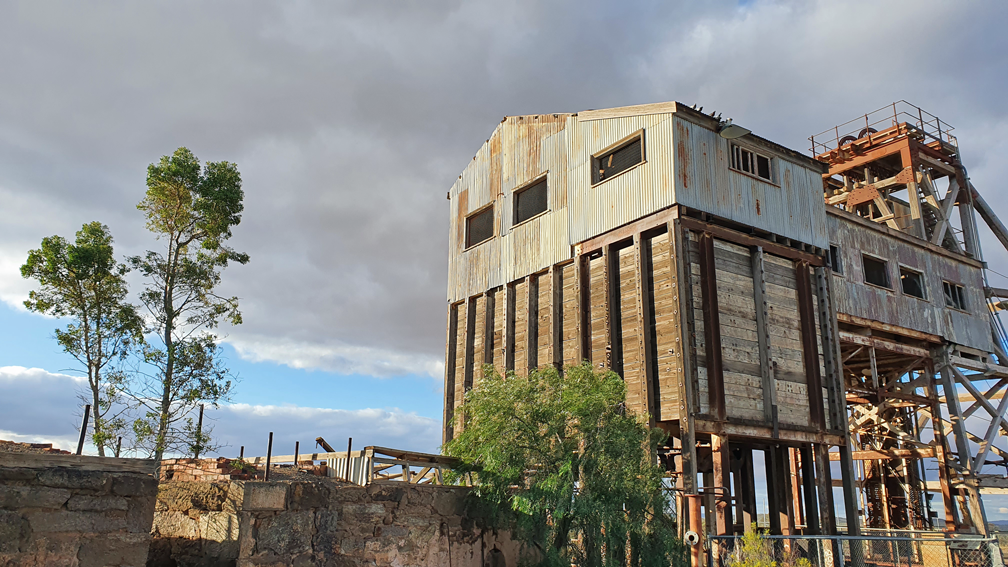
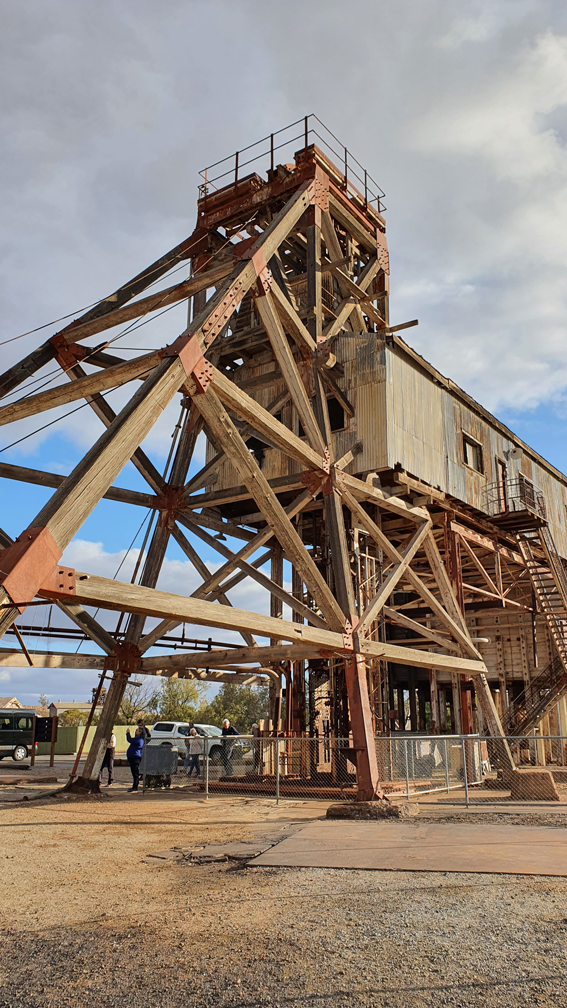
Juntion mine was first pegged in 1884, at the northern end of the outcropping lode. Broken Hill Junction Silver Minining Company was formed a few years later, and three shafts were sunk. The imposing wooden structure that you can visit is the Browne Shaft, the oldest remaining in Broken Hill. You can walk beneath and around the site. There’s some information boards around the place, and good views from there too.
Rare rocks
Also remaining at the Juntion Mine site is a geological feature known as a gossan outcrop. It’s one for geology enthusiasts. Gossan is intensely oxidized, weathered or decomposed rock, usually the upper and exposed part of an ore deposit or mineral vein.
In the 19th and 20th centuries gossans were important guides to buried ore deposits used by prospectors in their quest for metal ores. An experienced prospector could read the clues in the structure of the gossans to determine the type of mineralization likely to be found below the iron cap.
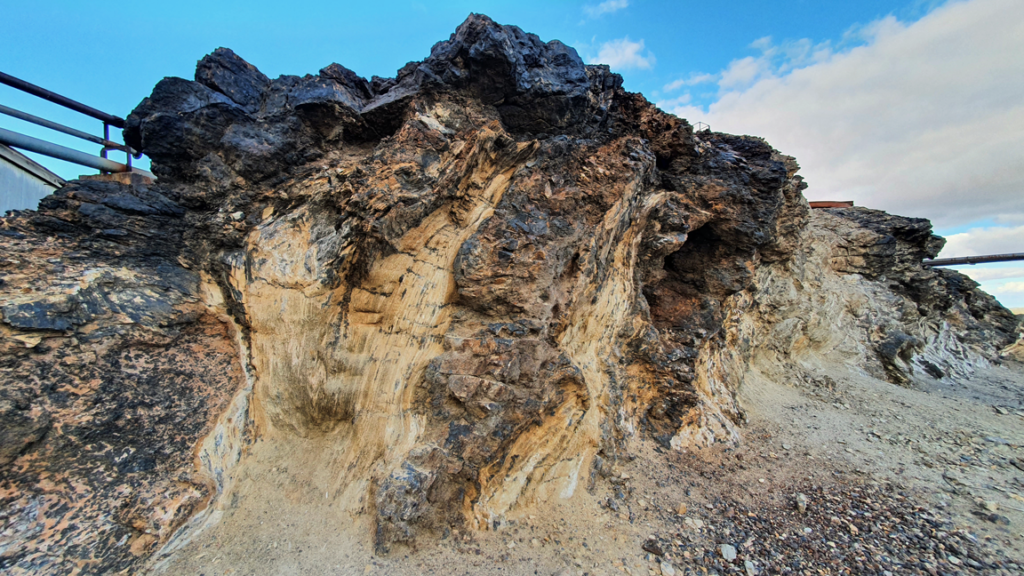
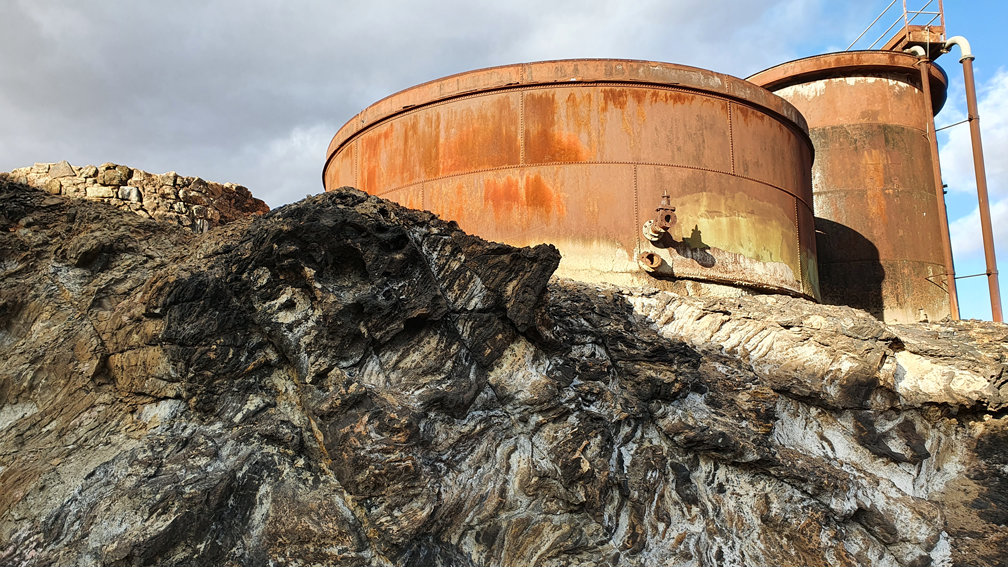
This is one of the few remaining outcrops of the 2.5km long Gossan that once capped the Broken Hill ore body. This was spotted by German chemist Charles Rasp in 1883 – and he became the first person to identify the economic potential of the ore desposits at Broken Hill.
Geology museum
Inspired by this interesting piece of geology, I made it my business to call into the Albert Kersten Mining and Minerals Museum. It’s on the corner of aptly named Bromide and Crystal Streets.
The Broken Hill ore deposit is thought to be the world’s richest and largest zinc-lead-silver ore deposit – which begs the question, how was it formed? At the museum you will find the answer to this in plain English.
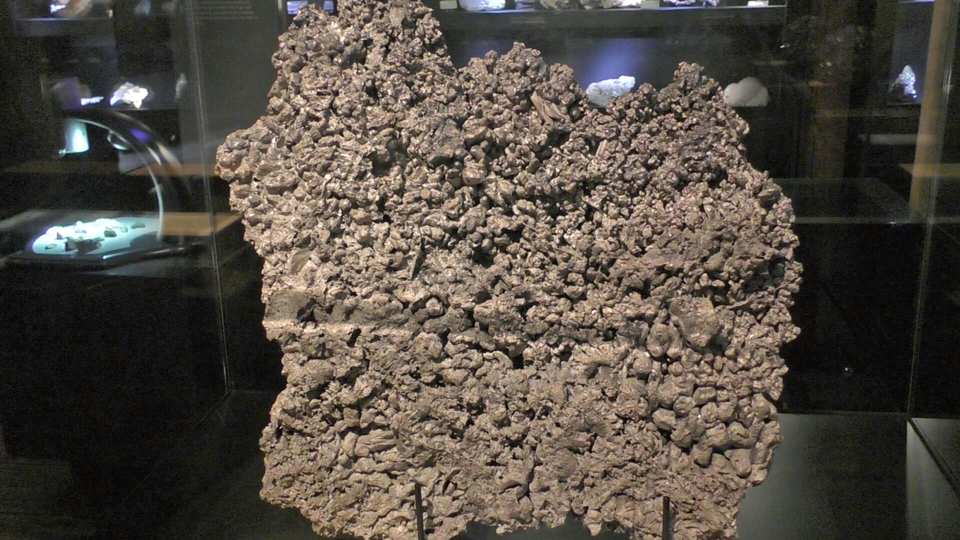
The Broken Hill ore body formed from volcanic activity about 1685 million years ago. Seawater heated by this volcanic activity flowed up through the underlying rocks to the seafloor where it mixed with cold ocean water, forming clouds of black sulphide precipitates. These then settled on the seafloor to form layers of sediment very rich in zinc, lead and silver sulphide minerals. Erosion over the next 500 million years exposed these minerals to weathering. Exposure to air and groundwater then triggered a series of chemical reactions which produced a suite of new minerals such as smithsonite, azurite and malachite.
Browse the museum’s extensive collection of minerals and crystals from the local area. Even if you don’t give a hoot about geology, some of these specimens are extraordinarily beautiful and unusual.
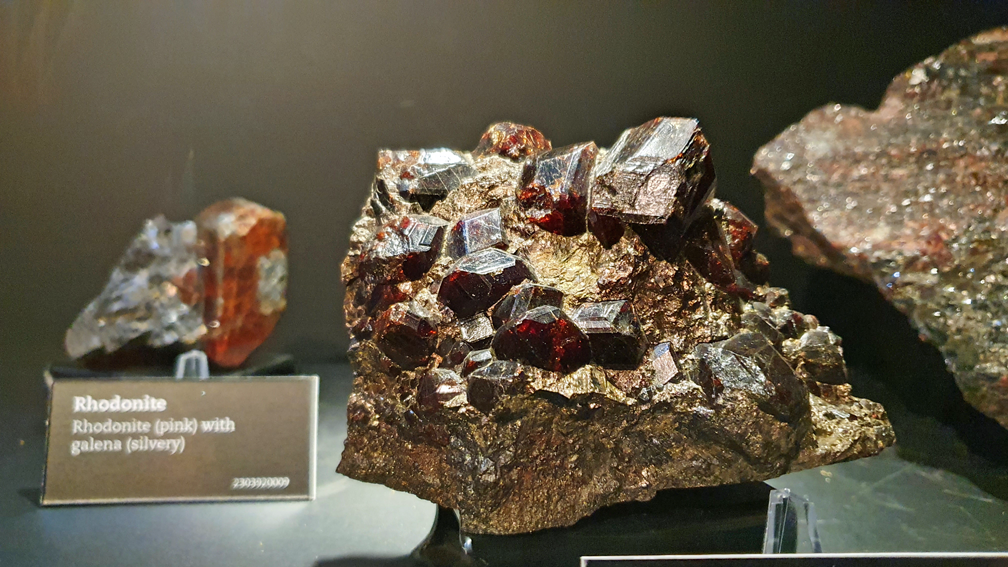
Art and Pro Hart
Broken Hill is a very arty place. There are sculptures in the parks, murals on the walls of buildings, art galleries scattered through the town, artists have always come here. Perhaps it’s something about the quality of the light, the beauty of the desert, the colours and shapes and forms of the landscape.
The Pro Hart Gallery is a must see on the local art trail. Hart is perhaps the best known of the Silver City’s artists. He was born locally and grew up on a sheep farm at Menindee before becoming a miner (as so many did). I’m not nearly clever enough to know whether Pro Hart deserved the commonly stated criticism of the art fraternity during his long career. “Populist and too derivitive” they said.
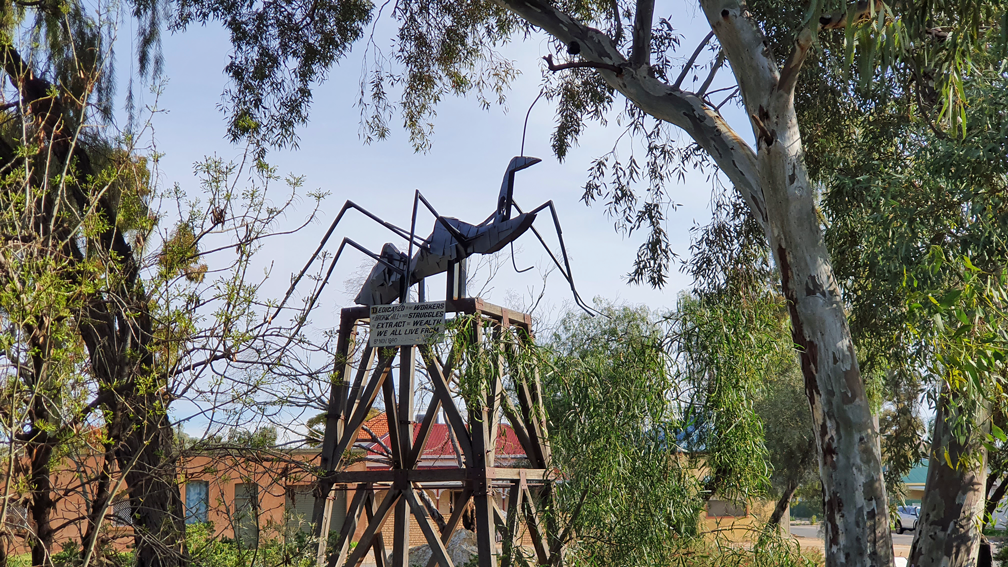
I have no idea, but I love his scenes of outback and mining life, the vibrant colours, the humour and quirkiness, the skill and story telling. There is a small garden across the road from the main gallery where you can see a collection of his sculptures. Inside the gallery, among many other wonderful works, are his famously painted Rolls Royce, and the amazing carpet dragonfly featured in the Dupont Stainmaster commercial in 1988.
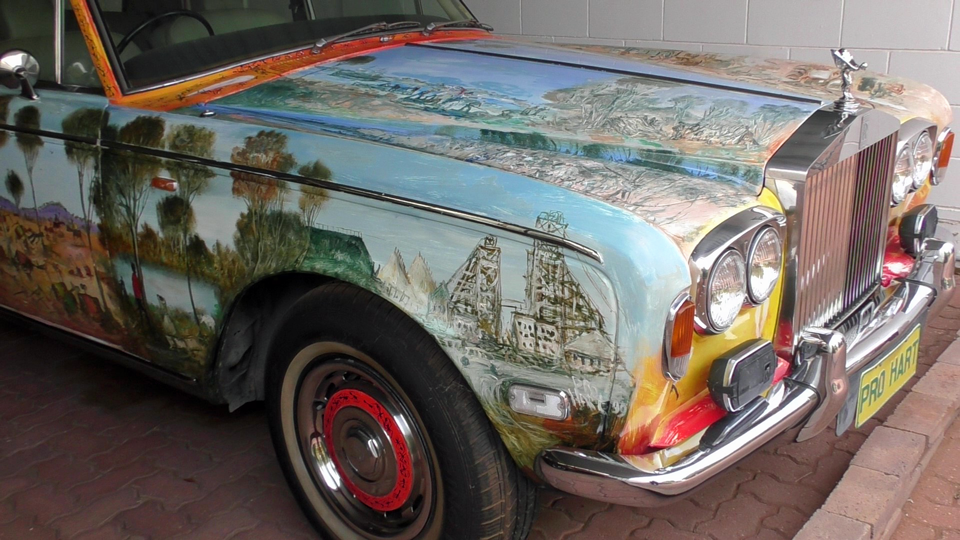
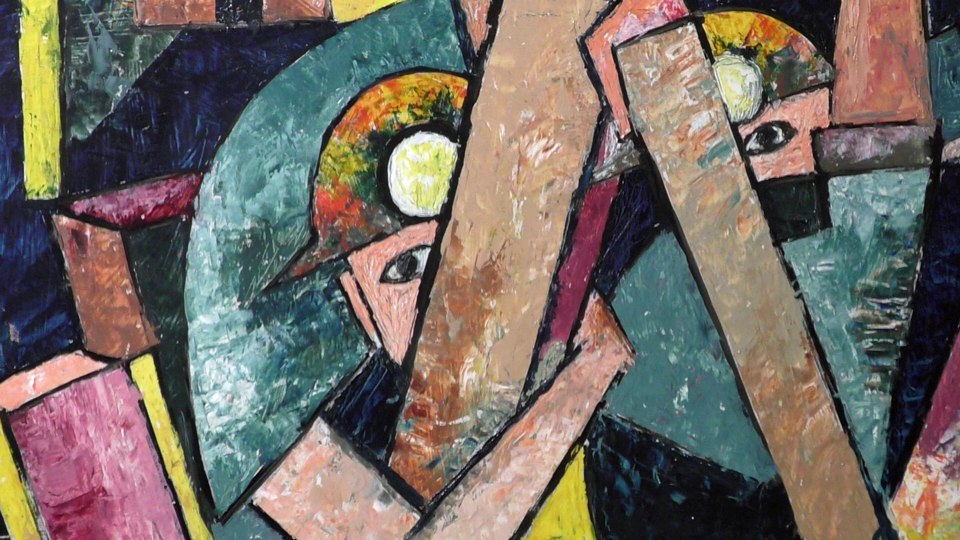
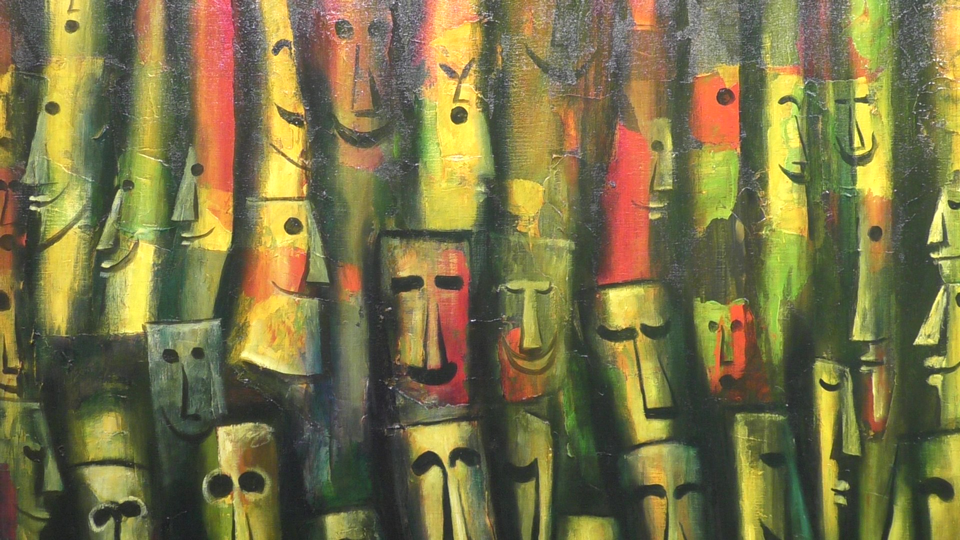
Other places we called into included Broken Hill Regional Art Gallery where we loved the works of Barkandjii Elder Badger Bates. We also called into the Jack Absolom gallery. If you love a sweeping landscape of luminous grandeur, you will enjoy this gallery.
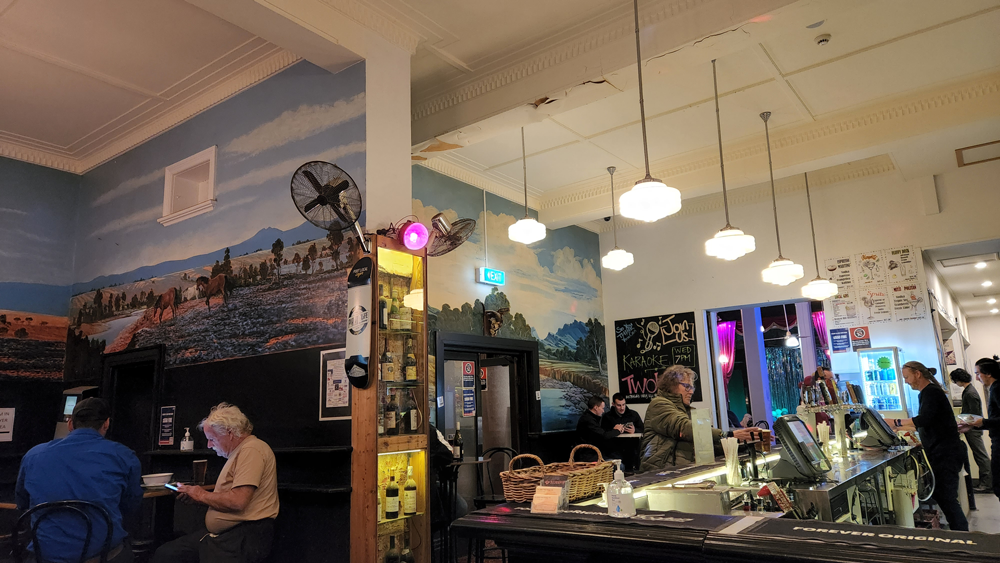
Don’t miss the work of Gordon Waye who was commissioned to paint a mural in a room of The Place Hotel and ended up continuing until he had covered almost every wall ceiling.
Living Desert State Park
We probably arrived at this wonderful nature sanctuary just outside Broken Hill at the best possible time. An uncharacteristicly wet year had brought good rain and even this usually dry part of the world was tinged with green. Wildflowers were blooming in abundance, including the beautiful red Sturt’s Desert Pea, and occasionally an unusal pink variety.
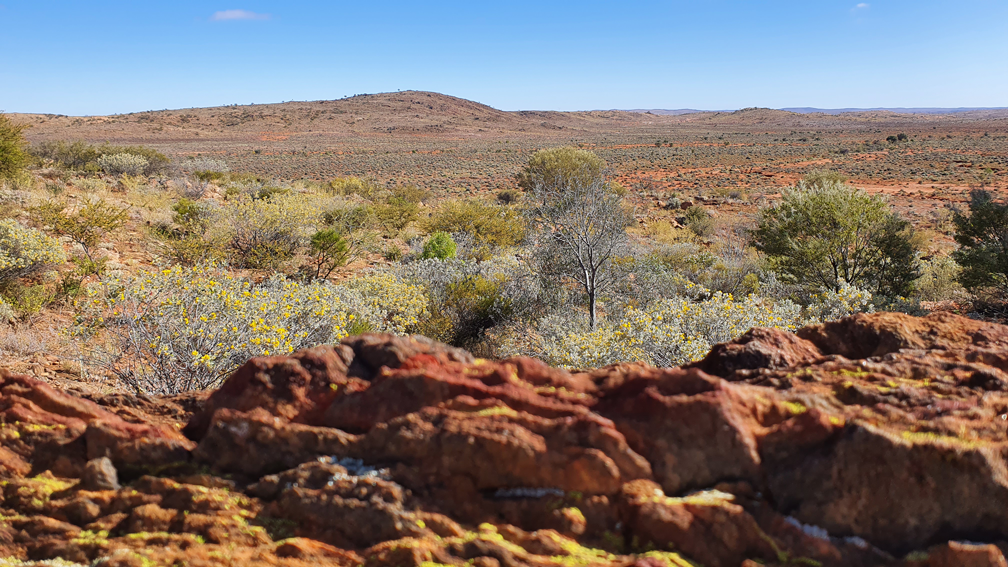
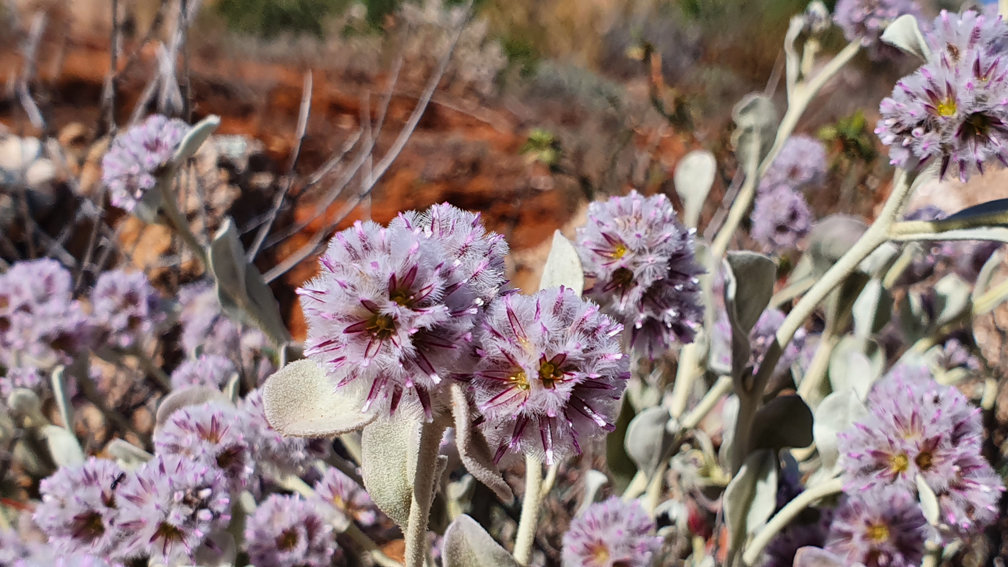
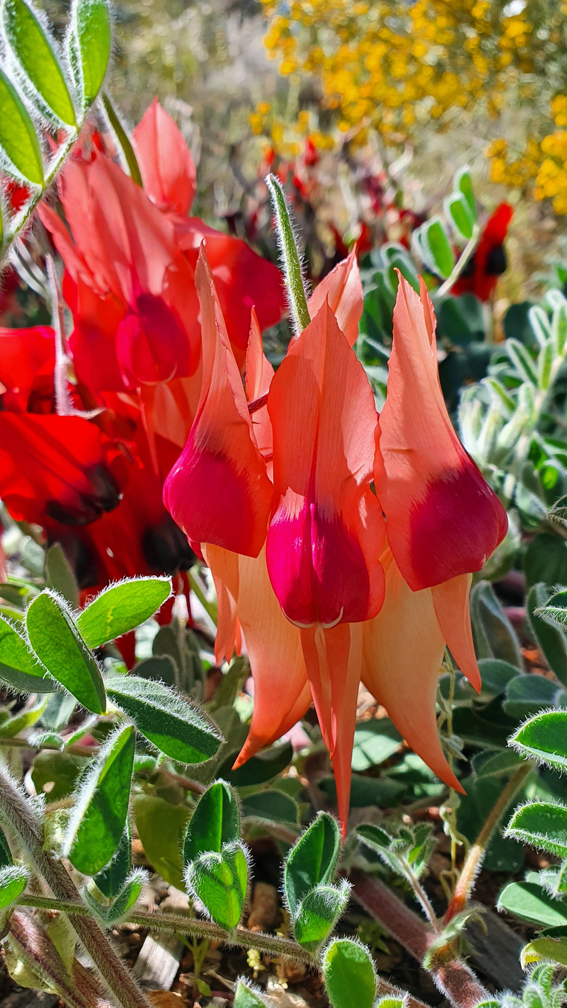
The 180ha John Simons Flora & Fauna Sanctuary is bordered by an electric predator-proof fence. There’s a 2.2km Sanctuary Cultural Walk Trail where you will learn a little bit more about the Traditional Custodians of the land. Interpretive signs helped us understand that while this might be a desert, it truly is one full of fascinating plants and animals.
Also in this reserve is a collection of beautiful sandstone sculptures. These were put in place on a hilltop in the reserve in 1993. You can either walk or drive up to them. People say they are best viewed at sunset, but they are quite lovely whatever the time of day.
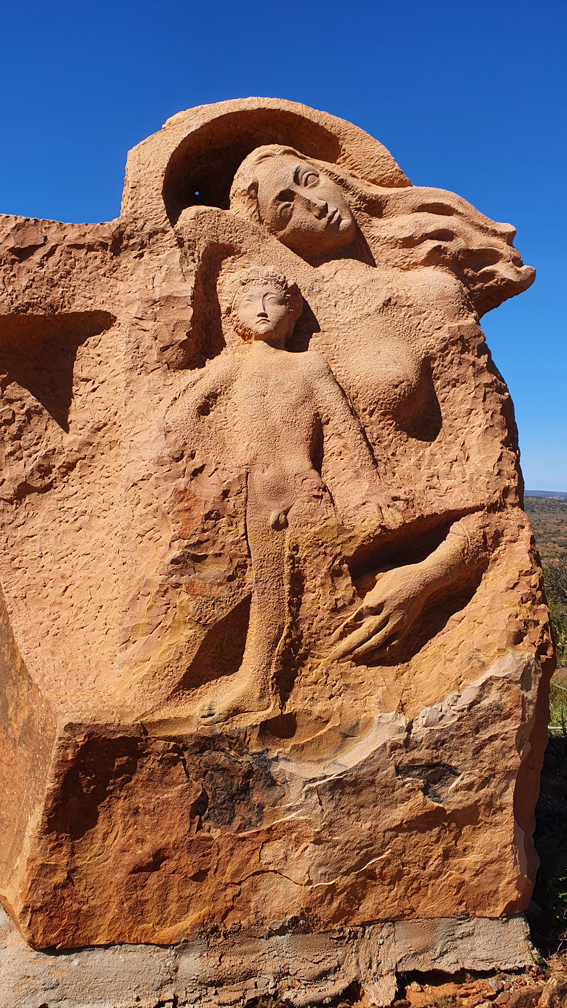
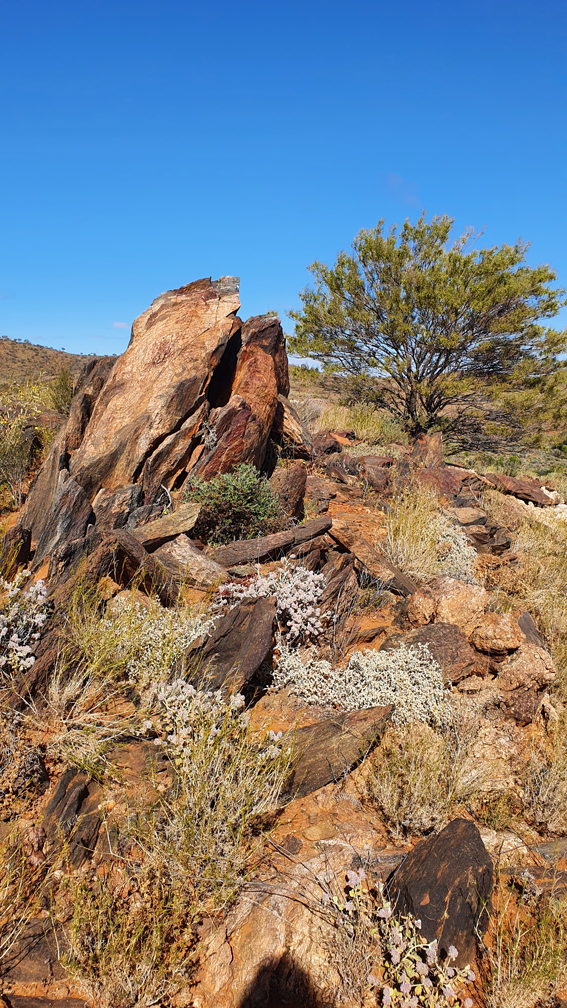
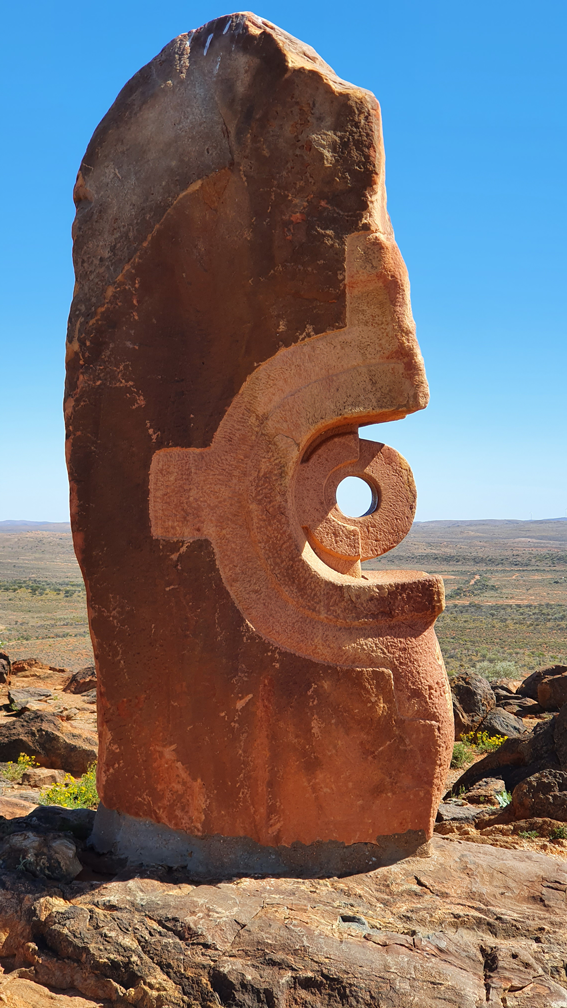
Silverton
The historic township of Silverton is just a half hour drive from Broken Hill and it’s fascinating. Its rich and colourful silver mining history began even before Broken Hill’s. The raw beauty of the landscape and the village against that stunning backdrop draws in thousands of tourists annuallly. The pub is a cracker.
Silverton was once a town of 3000 with it’s own council, court house and gaol (now a very good museum). It’s much different now – a population of just a few dozen.
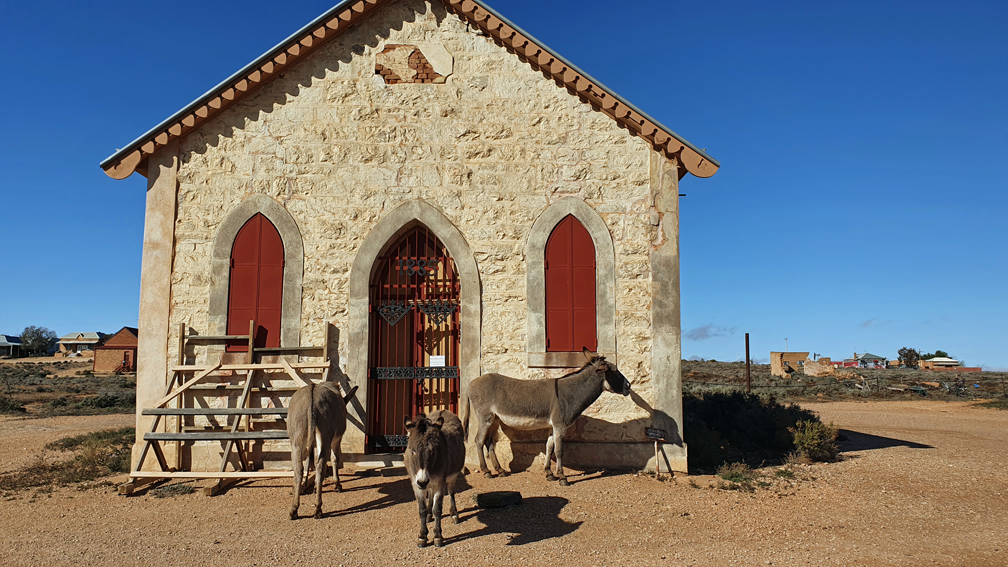
First stop was the pub for an early morning coffee and to take in the quirky bar. Then it was on with a jacket against the cold spring wind and a wander around the village with its old buildings, quirky art works, and eerie ruins.
We met the village’s famed herd of friendly donkeys as they ambled about and tried to warm up in the sun. Apparently they are cared for by the locals and have the run of the town.
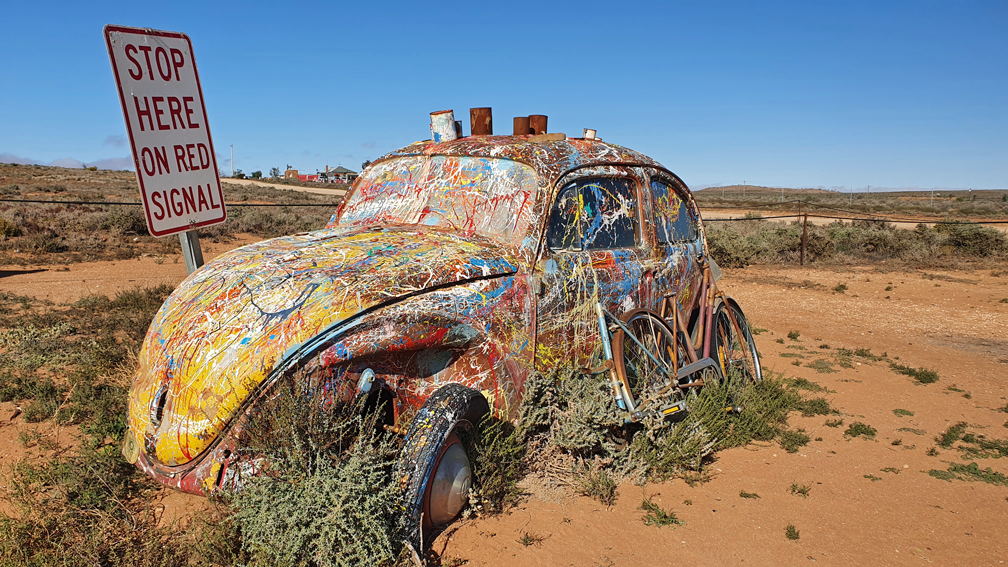
Silverton was the setting for iconic Austalian cult classic Mad Max 2 and there is a museum there with movie propos, memorabilia and replicas. It’s not the only movie link either. Razorback, Priscilla Queen of the Desert and The Flying Doctors used Silverton as a setting.
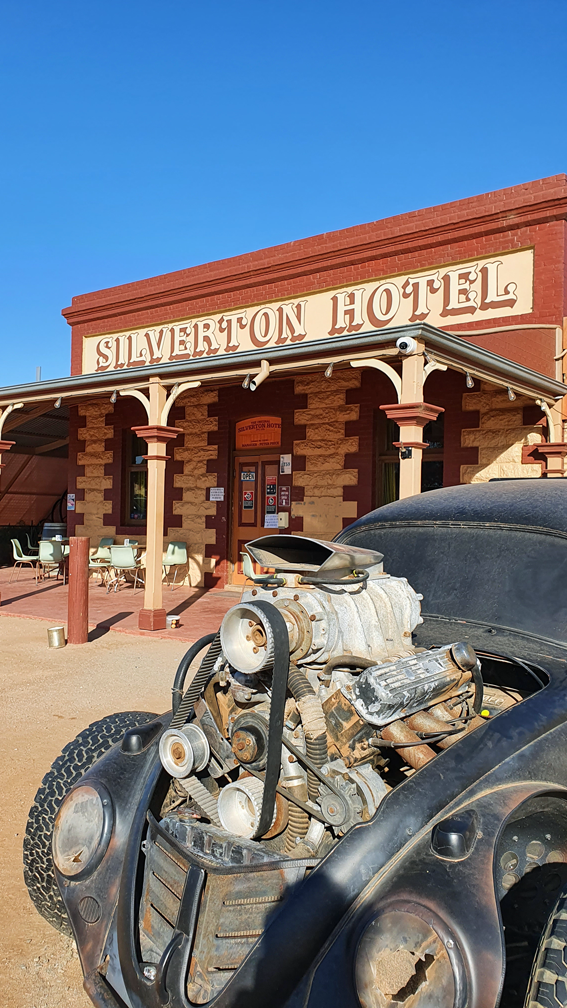
Menindee Lakes
After so many very dry years of drought, seeing the Menindee Lakes full to overflowing was too good an opportunity to miss. The Menindee Lakes are a naturally occurring series of shallow wetlands located along the lower Darling River, about 200 kilometres upstream of the junction with the Murray River at Wentworth.
They are naturally ephemeral, but the lakes were modified during the 1950s and 1960s to provide water storage to Broken Hill and other users in the Murray–Darling system, and to supply towns and irrigators along the Lower Darling and Murray rivers.
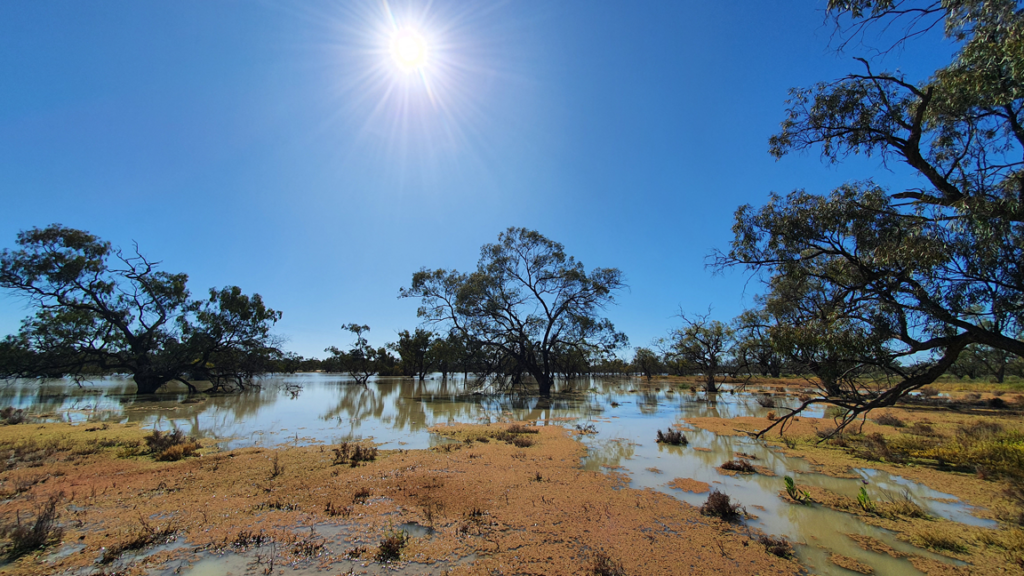
A good way to explore the lakes and the history around them is in Kinchega National Park, located just outside the village on Menindee. Menindee is the oldest Euopean settlement in western NSW and the first town established on the Darling River.
The filling of the lakes attracts incredible bird life to the area, and Kinchega National Park is known for the diversity of birds.
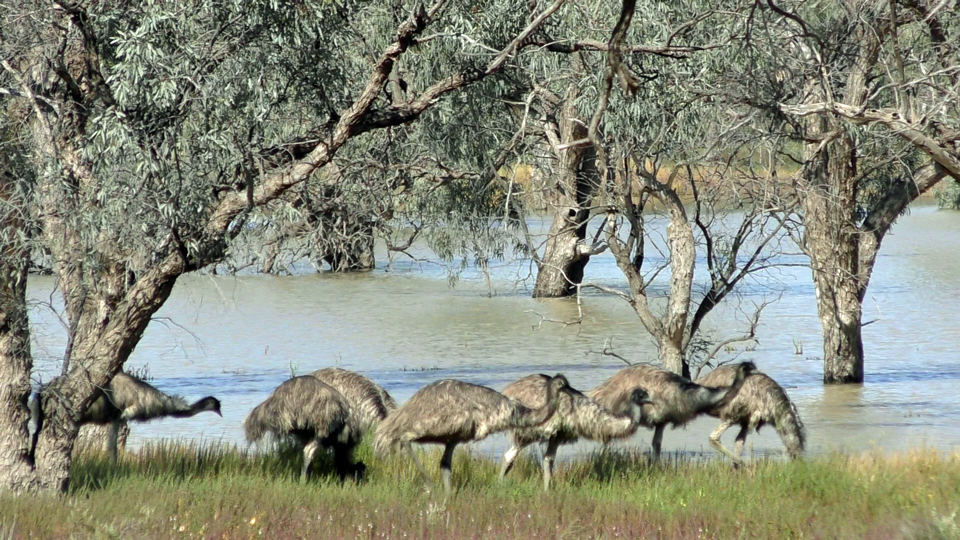
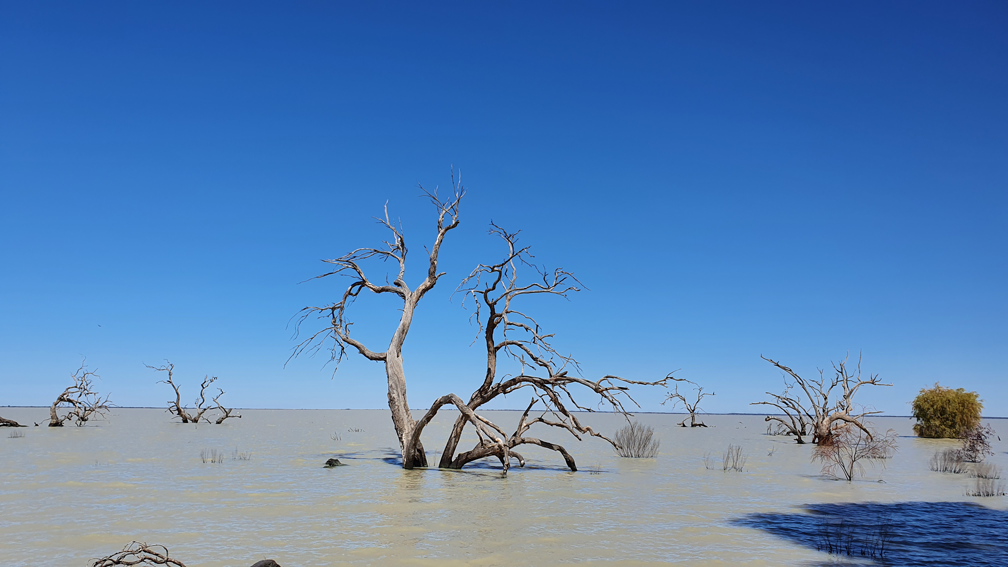
Kinchega National Park
This beautiful park will allow you to get close to the lakes and to explore the pastoral history of the area. Always check the local alerts for the park – at the time of writing it is closed due to flooding and rain.
The park is named after the historic Kinchega Sheep Station which by 1881 stretched from Menindee to the South Australian border, covering one million acres (more than 404,685ha). Six million sheep were shorn at this property over its life time. Wool was taken out by paddlesteamer to South Australia.
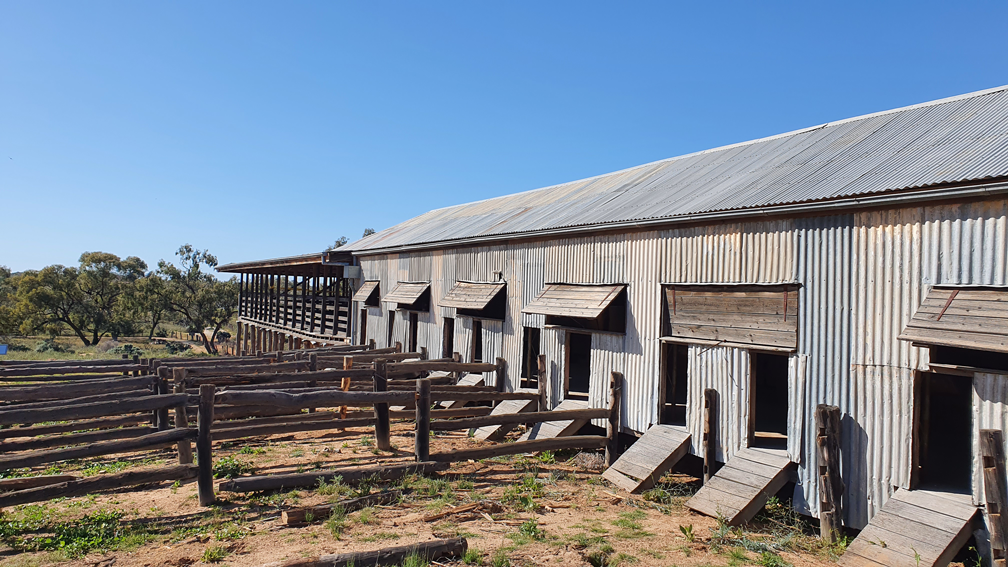
Make sure you visit Kinchega Woolshed which is listed on the Register of the National Estate. It really is an amazing survivor from those early pastoral days. Built in 1875 of corrugated iron and river red gum, it is located next to Emu Lake which was experiencing low level flooding when we arrived. That just added to the extraordinary scene.
Inside the woolshed, you’ll see wool presses and tables, a machinery room and an original steam engine as well as sweating pens and the board where the sheep were held for shearing.
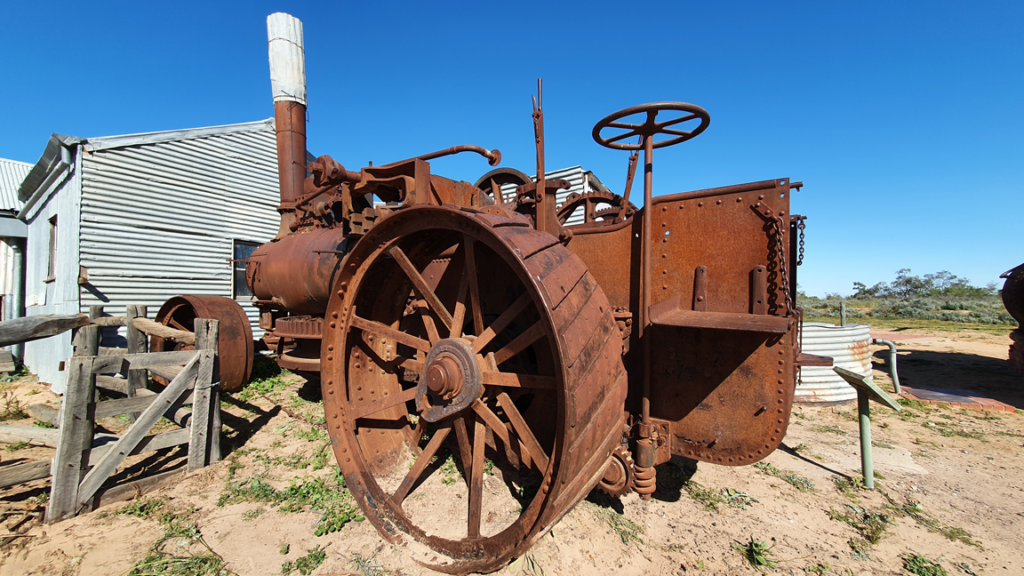
Where we ate
There are plenty of places to get a good meal at Broken Hill. Some say The Silly Goat is Broken Hill’s most stylish cafe. It’s in a wonderfully renovated cracker of an old building across the road from the Regional Art Gallery. We had a delicious breakfast there and the coffee was excellent.
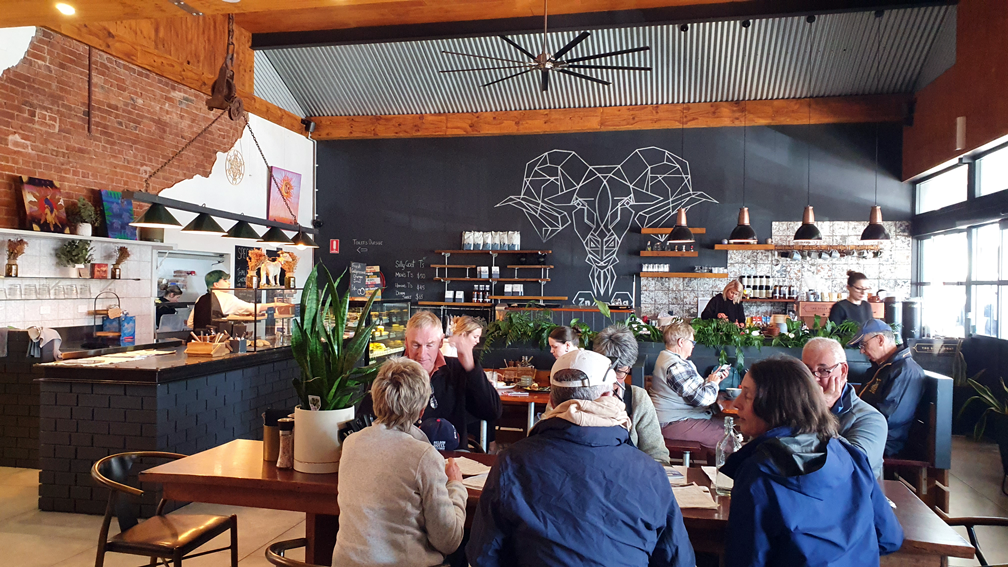
Soull Cafe and Espresso Bar was a great spot for a light lunch when we were on the go. The food was very good, with quick friendly service and a laid back vibe. It’s in The Astra building in Argent Street.
The Palace Hotel is well known for its starring role in the 1994 Australian movie, The Adventures of Priscilla, Queen of the Desert. But it was a Silver City landmark long before that.
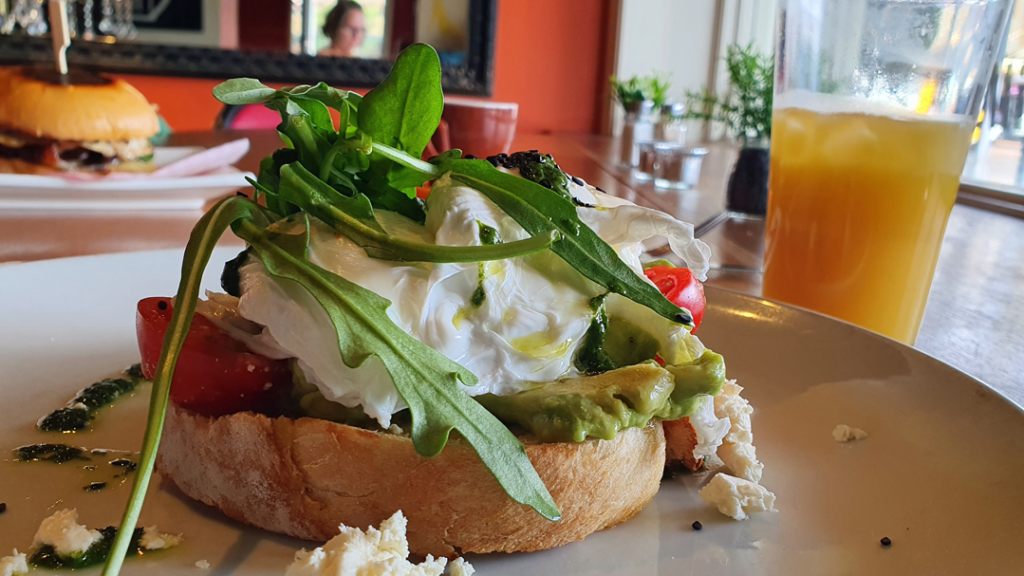
In an interesting twist, The Palace started life as a coffee house in 1889 during the period when the temperence movement was building or converting pubs into coffee houses where no alcohol would be served. Most of these hotels later either applied for liquor licenses or were demolished.
The Palace is a must for your Broken Hill visit. Excellent pub food, a beverage or two and the most astonishing collection of murals on almost every wall.
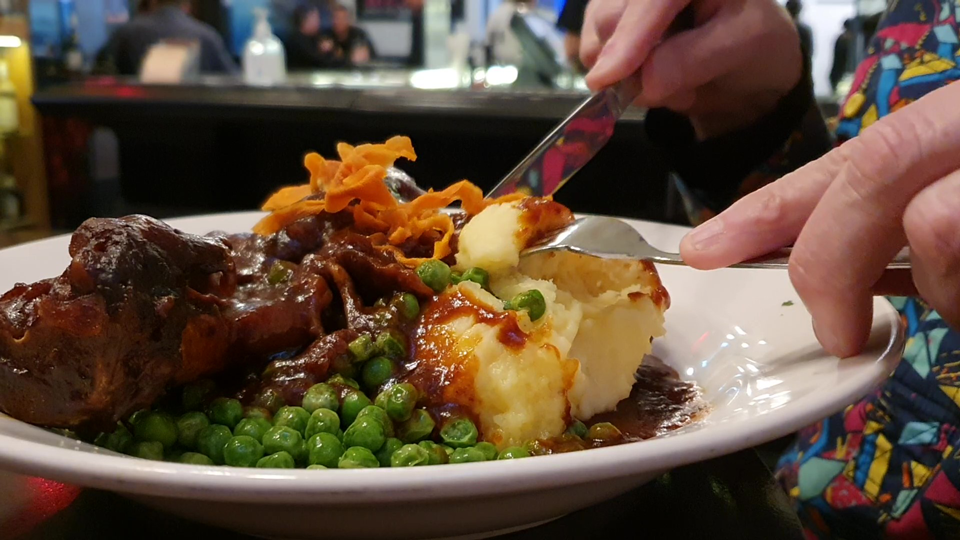
The Junction Hotel was named after the nearby Junction Mine (see above) this is one of the town’s oldest pubs and was opened in 1892. They serve a very good goat curry there.
Bells Milk Bar is another of Broken Hill’s unique and unusual destinations. It’s still got its original 1950’s decor and a menu to match including old style malted milks and soda spiders. We had a refreshing milkshake there after a long day of wandering.
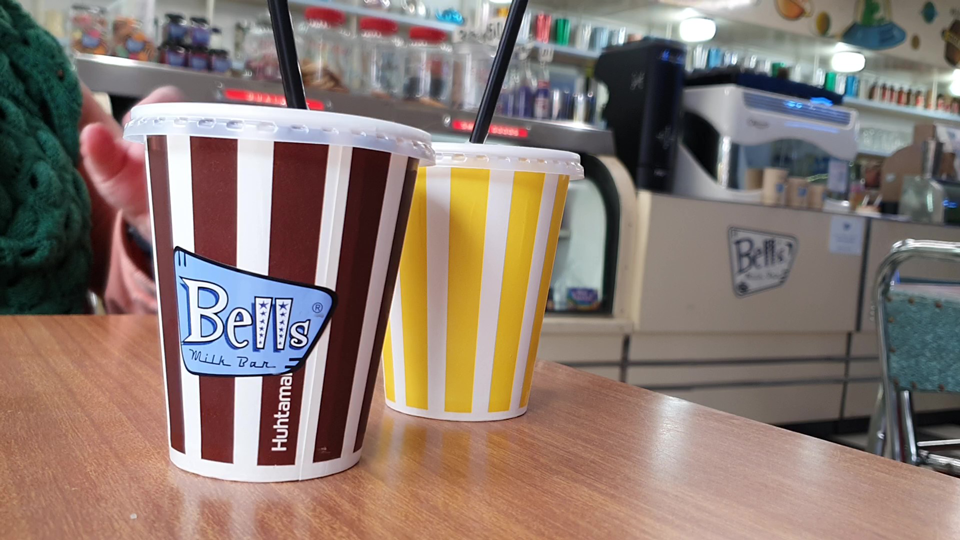
Where we stayed
We found a great little air b and b house within wlaking distance to the centre of town which had everything we needed and plenty of room to relax.
